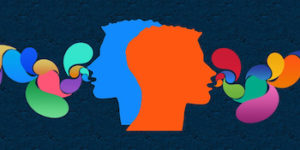
*The Creole language is celebrated on this date in 1500. Creole is a stable natural language that develops from simplifying and mixing different languages into a new one.
This can happen within a brief period: often, pidgin evolved into a full-fledged language. While the concept is like a mixed or hybrid language, creoles are usually characterized by a tendency to systematize their inherited grammar (e.g., by eliminating irregularities or regularizing the conjugation of otherwise irregular verbs). Like any language, creoles are characterized by a consistent grammar system, possess large, stable vocabularies, and are acquired by children as their native language. These three features distinguish a creole language from a pidgin.
Creolistics, or creology, is the study of creole languages and, as such, is a subfield of linguistics. Someone who engages in this study is called a creolist. The number of global creole languages is unknown; many are scantily attested or documented. About one hundred creole languages have arisen since 1500. These are predominantly based on European languages such as English and French due to the Middle Passage and the resulting Atlantic slave trade at that time.
With the improvements in shipbuilding and navigation, whites had to learn to communicate with people worldwide. The quickest way to do this was to develop a pidgin or simplified language suited to the purpose; in turn, full creole languages developed from these pidgins. The first distinction concerns the borderline between pidgin and creole. Theoretically, the line was always assumed to be straightforward: pidgins are languages of intercultural communication without native speakers, and creoles are languages of a specific community with native speakers. In addition to creoles with European languages as their base, there are, for example, creoles based on Arabic, Chinese, and Malay.
The creole with the most significant number of speakers is Haitian and Jamaican Creole, with over ten million native speakers, followed by Tok Pisin with about 4 million second-language speakers. The lexicon of a creole language is primarily supplied by the parent languages, particularly that of the most dominant group in the social context of the creole's construction. However, there are often apparent phonetic and semantic shifts. On the other hand, the evolved grammar usually has new or unique features that differ substantially from those of the parent languages.